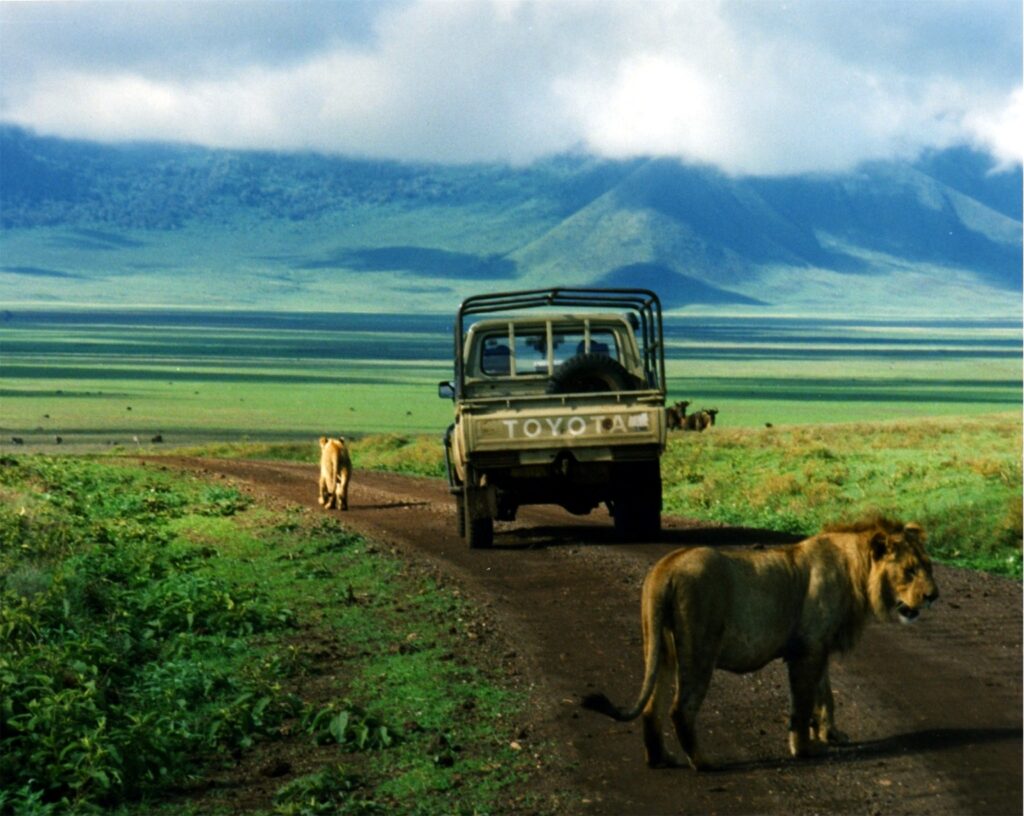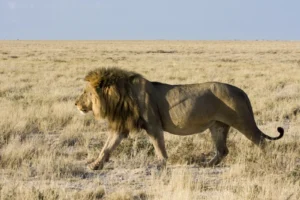
The Fascinating Facts About the Average Weight of Male Lions: Unveiling the True Kings of the Savannah!
Welcome to the wild and majestic world of male lions, the true kings of the savannah! In this article, we will delve into the fascinating facts about the average weight of these powerful beasts, uncovering just how impressive they truly are.
Male lions are renowned for their awe-inspiring presence and commanding strength. With their regal manes and impressive size, they capture our imagination and admiration. But just how heavy are these majestic creatures?
The average weight of a male lion is a staggering 420-570 pounds (190-260 kilograms). This means that these regal felines are built to dominate and defend their kingdom. Their muscular bodies and immense weight make them formidable hunters and fierce protectors of their pride.
But why is their weight so significant? Understanding the average weight of male lions not only reveals their physical prowess but also sheds light on their evolutionary adaptations and roles in their ecosystem.
Join us as we explore the intriguing world of male lions and uncover the secrets behind their impressive size and strength. Get ready to be amazed by these true kings of the savannah!
Average weight of male lions
Male lions are truly the kings of the savannah, and their impressive weight is a testament to their regal status. On average, a male lion can weigh anywhere from 420 to 570 pounds (190 to 260 kilograms). This staggering size is a result of their muscular, powerful build, which is essential for their roles as the dominant predators in their ecosystem.
The average weight of male lions is significantly higher than their female counterparts, known as lionesses. Lionesses typically weigh between 260 to 400 pounds (120 to 180 kilograms), making the males nearly 50% heavier on average. This size difference is a crucial factor in the social dynamics and hierarchy within a lion pride, with the larger males asserting their dominance and leading the group.
It’s important to note that the weight of male lions can vary depending on various factors, such as their age, geographical location, and access to food resources. Younger males, for instance, tend to be on the lower end of the weight range, while older, more experienced males can reach the upper limits. Additionally, lions living in areas with abundant prey and resources may be heavier than those in more resource-scarce environments.
Factors that influence the weight of male lions
The weight of male lions is influenced by a variety of factors, both environmental and biological. Understanding these factors can provide valuable insights into the lives and adaptations of these majestic creatures.
One of the primary factors is the availability and quality of food sources. Lions are apex predators, and their diet primarily consists of large herbivores, such as wildebeests, zebras, and antelopes. In areas with abundant prey, male lions have the opportunity to consume more calories and build up their muscle mass, leading to a higher average weight. Conversely, in regions with scarce resources, male lions may struggle to maintain their weight, potentially leading to a lower average.
Another influential factor is the age and maturity of the male lion. Younger males, typically under the age of 5, tend to be on the lighter end of the weight spectrum, as they are still developing their muscle mass and physical strength. As they mature and reach their prime, usually between the ages of 5 and 10, male lions can reach their maximum weight, with the heaviest individuals often being the oldest and most experienced in the pride.
Genetics also play a role in the weight of male lions. Like any other species, individual variations in genetic makeup can lead to differences in size, muscle composition, and overall body structure. Some male lions may be genetically predisposed to larger builds, while others may have a more slender frame, even within the same pride or geographical region.
Comparison of male lion weight with other big cats
When it comes to the weight of big cats, male lions stand out as the true heavyweights of the feline world. While other large predators, such as tigers, jaguars, and leopards, are impressive in their own right, male lions consistently outweigh them by a significant margin.
Tigers, the largest of the big cats, typically weigh between 300 to 700 pounds (136 to 318 kilograms), with the largest individuals reaching the upper end of the range. However, even the largest tigers are still on the lower end of the weight spectrum compared to the average male lion.
Jaguars, known for their powerful build and impressive hunting skills, generally weigh between 125 to 250 pounds (57 to 113 kilograms). While these big cats are formidable in their own right, they are dwarfed by the sheer size and weight of the male lion.
Leopards, the smallest of the big cats, typically weigh between 75 to 165 pounds (34 to 75 kilograms). While these agile and elusive predators are impressive in their own way, their weight is a mere fraction of the average male lion.
Significance of weight in the hierarchy of male lions
The weight of male lions plays a crucial role in the intricate social hierarchy within a lion pride. As the dominant members of the group, the larger, heavier males assert their authority and command respect from the other lions, including the lionesses and younger males.
The sheer size and weight of male lions serve as a visual cue to their fellow pride members, signaling their strength, experience, and ability to protect the group. Heavier males are often the ones who lead the pride, making decisions about hunting, territory defense, and the care of the young cubs.
In the event of a challenge to their dominance, the weight and physical prowess of male lions become even more critical. Heavier males are better equipped to engage in fierce battles, using their size and power to overwhelm their opponents. The outcome of these confrontations can determine the leadership and control of the pride, with the victorious male solidifying his position as the reigning king of the savannah.
The role of weight in hunting and defending territories
The impressive weight of male lions is not just a matter of social status; it also plays a vital role in their hunting and territorial defense strategies. As the apex predators of their ecosystem, male lions rely on their size and strength to secure their position at the top of the food chain.
When it comes to hunting, the heavier male lions are better able to overpower and subdue their prey. Their muscular build and sheer weight give them a distinct advantage in chasing down and bringing down large herbivores, such as wildebeests, zebras, and antelopes. The extra weight also allows them to exert more force when grappling with their prey, ensuring a successful kill.
In addition to hunting, the weight of male lions is crucial in defending their territories from rival prides and other potential threats. Heavier males are better equipped to engage in the intense, often violent confrontations that can occur between prides vying for control over valuable resources, such as water sources and prime hunting grounds. Their size and strength enable them to intimidate and, if necessary, physically overpower their opponents, ensuring the safety and security of their pride.
Interesting facts about the weight of male lions
As we delve deeper into the fascinating world of male lions, there are several intriguing facts about their weight that are worth exploring.
One fascinating fact is that the weight of male lions can fluctuate significantly throughout their lifetime. As they reach adulthood and maturity, male lions can gain and lose weight depending on various factors, such as the availability of food, the demands of mating and territorial defense, and even the changing seasons. This adaptability allows them to maintain their physical dominance and ensure the survival of their pride.
Another interesting fact is that the weight of male lions can be a reliable indicator of their social status and reproductive success. Heavier males are often the ones who are able to secure the most desirable mating opportunities, as their size and strength make them more attractive to lionesses. This, in turn, can lead to a higher rate of successful reproduction and the continuation of their genetic lineage.
Lastly, it’s worth noting that the weight of male lions can also have implications for conservation efforts. As these majestic creatures face various threats, such as habitat loss and hunting, maintaining their optimal weight and physical condition becomes crucial for their survival and the preservation of their species. Understanding the factors that influence their weight can help inform conservation strategies and ensure the long-term viability of lion populations.
Conservation efforts for preserving the weight of male lions
As the kings of the savannah, male lions play a critical role in the delicate balance of their ecosystem. However, the weight and overall health of these magnificent creatures are under threat due to various human-induced factors, such as habitat destruction, poaching, and climate change. Preserving the weight of male lions is essential for their long-term survival and the conservation of their species.
One of the primary conservation efforts focused on maintaining the weight of male lions is the protection and restoration of their natural habitats. By safeguarding the vast, untamed landscapes of the savannah, conservationists can ensure that male lions have access to the abundant prey and resources they need to thrive and maintain their impressive weight. This includes the establishment of protected areas, the enforcement of anti-poaching measures, and the implementation of sustainable land-use practices.
Another crucial aspect of conservation efforts is the monitoring and research of lion populations. By closely studying the weight, health, and behavioral patterns of male lions, researchers can gain valuable insights into the factors that influence their well-being. This information can then be used to inform targeted conservation strategies, such as the provision of supplementary feeding during times of resource scarcity or the implementation of targeted interventions to address specific threats.
Misconceptions about the weight of male lions
Despite the wealth of information available about the average weight of male lions, there are still several misconceptions and myths that persist. Addressing these misconceptions is essential to ensure a deeper understanding and appreciation of these majestic creatures.
One common misconception is that all male lions are uniformly massive in size and weight. While it’s true that male lions are significantly larger and heavier than their female counterparts, the weight of individual males can vary considerably based on factors such as age, location, and access to resources. Not every male lion will be at the upper end of the weight spectrum, and it’s important to recognize the natural diversity within the species.
Another misconception is that the weight of male lions is the sole determinant of their dominance and social status within the pride. While weight is certainly a significant factor, it’s not the only consideration. Factors such as experience, social skills, and strategic alliances also play crucial roles in the complex hierarchy of lion society. A younger, lighter male lion may still be able to challenge and potentially defeat an older, heavier male through a combination of cunning, strength, and strategic maneuvering.
It’s also important to dispel the notion that the weight of male lions is a static, unchanging characteristic. As mentioned earlier, the weight of these animals can fluctuate throughout their lifetime, responding to various environmental and biological factors. Understanding this dynamic nature of their weight can help us appreciate the adaptability and resilience of these remarkable creatures.
Conclusion: Celebrating the majestic weight of male lions
In the vast and awe-inspiring world of the savannah, the male lion reigns supreme, commanding our respect and admiration with its sheer size and weight. From the towering 570-pound giants to the still-impressive 420-pound beasts, these majestic creatures embody the essence of power, strength, and resilience.
As we have explored in this article, the average weight of male lions is a testament to their evolutionary adaptations and their critical role in the delicate balance of their ecosystem. Their impressive size and weight not only serve as a symbol of their dominance but also play a crucial role in their hunting strategies, territorial defense, and social hierarchy.
By understanding the factors that influence the weight of male lions, we can gain a deeper appreciation for these magnificent animals and the challenges they face in the modern world. From the preservation of their natural habitats to the ongoing efforts to monitor and protect their populations, it is our responsibility to ensure that the weight and overall well-being of these kings of the savannah are safeguarded for generations to come.
As we celebrate the majestic weight of male lions, let us be inspired by their resilience, their power, and their unwavering spirit. These true kings of the savannah remind us of the wonders of the natural world and the importance of preserving the delicate balance that sustains it. Let us continue to marvel at their grandeur, learn from their adaptations, and commit to their protection, ensuring that the roar of the male lion echoes through the vast expanse of the savannah for centuries to come.






